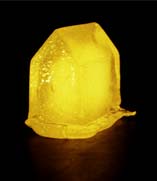
White Sea [Sculpture, 2020]
Wood, glass, archive photographs; 1 x 1 x 1 m

more images
The background to the project is the so-called Swedish extradition of Baltic soldiers to the Soviet Union after World War II. About 150 Latvian soldiers in the German army fled at the end of the war to Gotland, where they were held at a detention camp called Lager Lingen, together with a few hundred soldiers from Germany. 21 of these Latvian soldiers were extradited in January of 1946. In 1994 the Swedish government made an official apology. The work is concentrated on the summer of 1945 where about 600 soldiers were held, in what looks like an idyllic summer camp, in southern Gotland. The relief and happiness that the war is finally over are apparent in their faces. The Swedish soldiers and the local community were far from the Swedish government politics but got to know and appreciate these refugees of war. Ability to preserve humanity in the horrors of war is in these captivating archive photographs. The wooden crate installation is made from wartime materials: wood and flat glass collected from renovations of World War II military barracks.
Photos: David Holmert archive, Kjell Gardelin family archive, Gotlands Defence Museum
The art work is part of the exhibition VOICE OF GLASS COLLABORATIVE, Latvian National Museum of Art / Art Museum Riga Bourse, Riga, Latvia 23.02.2021-01.08.2021.
Curated by Inguna Audere and Michael Rogers
Organised within the project Imagining Sustainable Glass Network Europe (ISGNE) in cooperation with North Lands Creative (Great Britain), Berlin Glas (Germany), National College of Art and Design (Ireland), Ltd. Stikla māja (Latvia).
From the catalogue:
The exhibition highlights the aspect of collaboration in the creation and realization of works of art, which has become especially relevant during the pandemic. Single authorship is still prevalent in public art space. This situation makes the idea of collaboration a new frontier – the project purposefully involves artists from different countries who are able and interested in turning to glass as a mediator and, using the advantages of the collaborative process, integrating it into the work of art.
Vita Birzaka, Exhibition Curator, Latvian National Museum of Art:
In the case of Voice of Glass Collaborative, the texts which describe the works provide information about their sizable invisible segment, which has caused each artist to end up with a specific visual solution. Time often becomes fragmentary and non-linear in works of contemporary art, with the past, present and future joining up in a complex series of stories. Whether the idea for the work of art is inspired by the capacity of the specific material glass, or whether the concept comes first, and solutions for its material visualisation are then sought, is an interesting question. In her installation White Sea, Anna Norberg (Sweden) uses planks and glass from the Second World War era, dismantled from army barracks during renovation work, and historical photographs, to tell the tragic story of the handing over of Baltic soldiers by Sweden to the Soviet Union in 1946. The specific choice of material strengthens the emotional effect of the work’s narrative. In her artist’s message, she emphasizes: “My artistic endeavour is to bring attention, or to visualize, that which is invisible or in my opinion neglected"...



